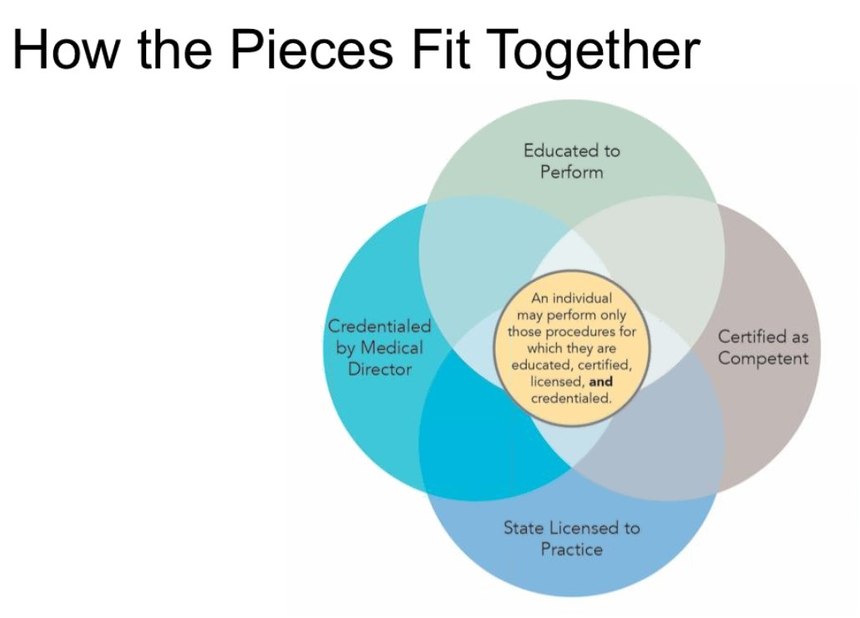EMS Education
Published (updated: ).

The point of this section is to explain how the curriculum (the plan the instructor uses to deliver the course) is developed. At the National level, the National Highway Transportation Safety Administration (NHTSA) provides guidance for all levels of training in Emergency Medical Services (EMS) Training. A logical question would be, “what would a bunch of people who build highways and bridges know about EMS?”. The answer is the National Highway Safety Act of 1974 which stipulated EMS be provided for areas served by the Eisenhower Interstate System and left the direction of such activities to NHTSA.
https://www.ems.gov/partners.html
The National Highway Transportation Safety Administration’s Office of EMS provides support to the Federal Interagency Committee on EMS (FICEMS), which is a collaborative body focused on defining the direction of Federal research and initiatives to support the EMS community. The agencies listed above comprise the membership of FICEMS. This membership receives input from the appointed community representatives who comprise the National EMS Advisory Council (NEMSAC).
The Department of Transportation’s National Highway Traffic Safety Administration (NHTSA), through its Office of EMS reduces death and disability by providing leadership and coordination to the EMS community in assessing, planning, developing, and promoting comprehensive, evidence-based emergency medical services and 911 systems. Specifically, NHTSA partners with peer agencies to advance a National vision for EMS, and collects and analyzes the data EMS managers need to make critical decisions.
The scope of practice defines the healthcare services that a pre-hospital provider is authorized to perform by virtue of professional licensure. The scope of practice in Emergency Medical Services (EMS) is under the regulation of state-level licensure. To become licensed, an EMS provider must provide evidence of satisfactory completion of an accredited education program, a certification examination, and state licensure. For clarity, certification verifies a knowledge or experience base. Licensure bestows permission to perform specific duties/skills.
Certification is a process where you meet the requirements for a certifying body to declare you are educated or trained. A person with said certification can obtain a license to practice issued by a government agency. In Georgia, EMS personnel take a National Registry exam to be certified and then obtain a license through the Georgia Department of Public Health.
Each level of EMS provider has a defined scope of practice that gets delineated in the National Highway and Traffic Safety Administration (NHTSA), The National EMS Scope of Practice Model. This scope was developed based on a uniform educational curriculum and included knowledge and skills critical to each level of care, meaning any provider with that level of certification and licensure should be equipped to perform these skills.
The scope of practice model defines four levels of pre-hospital provider:
- Emergency Medical Responder (not licensed in Georgia but trained by certified instructors)
- Emergency Medical Technician (licensed in Georgia)
- Advanced Emergency Medical Technician (licensed in Georgia)
- Paramedic (licensed in Georgia)
Description of the Profession
The Emergency Medical Responder’s scope of practice includes simple skills focused on lifesaving interventions for critical patients. Typically, the Emergency Medical Responder renders on-scene emergency care while awaiting additional EMS response and may serve as part of the transporting crew, but not as the primary care giver. In many communities, Emergency Medical Responders provide a mechanism to increase the likelihood that trained personnel and lifesaving equipment can be rapidly deployed to serious emergencies. In all cases, Emergency Medical Responders are part of a tiered response system. Emergency Medical Responders work alongside other EMS and health care professionals as an integral part of the emergency care team.
The Emergency Medical Responder’s scope of practice includes simple, non-invasive interventions to reduce the morbidity and mortality associated with acute out-of-hospital medical and traumatic emergencies. Emergency care is based on assessment findings. Additionally, the Emergency Medical Responder provides care designed to minimize secondary injury and comfort the patient and family while awaiting additional EMS resources. A major difference between the lay person and the Emergency Medical Responder is the “duty to act” as part of an organized EMS response. In some systems, Emergency Medical Responders serve as a part of the crew on transporting EMS units; however, the EMR is not intended to be the highest level caregiver in such situations. They must function with an EMT or higher level personnel during the transportation of emergency patients.
The scope of practice model of an EMR is limited to simple skills that are effective and can be performed safely in an out-of-hospital setting with medical oversight. After initiating care, the Emergency Medical Responder transfers care to higher level personnel. The Emergency Medical Responder serves as part of an EMS response system that ensures a progressive increase in the level of assessment and care.
